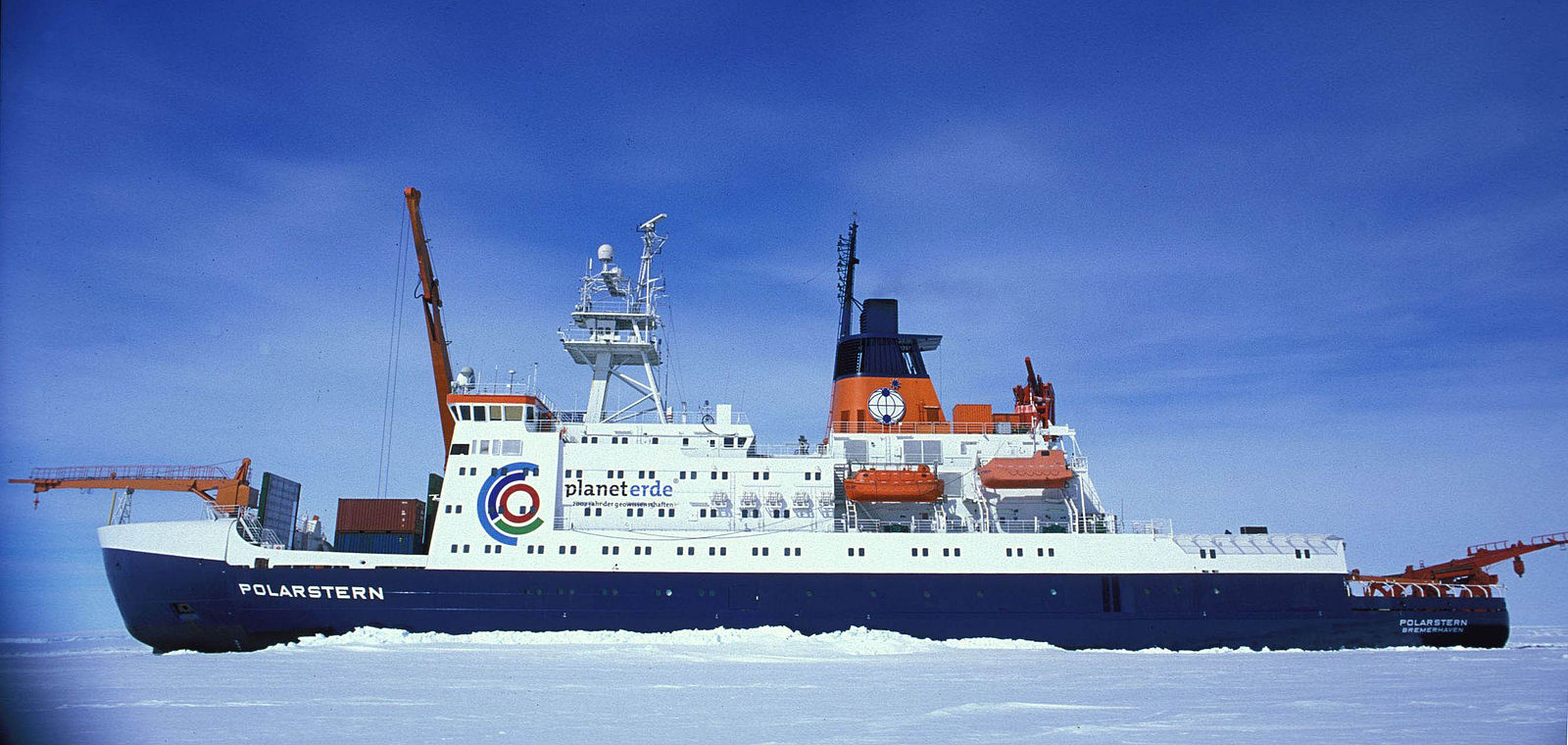 Named after the polar star, the Polarstern set sail for the Arctic region on September 20, 2019.
Named after the polar star, the Polarstern set sail for the Arctic region on September 20, 2019.
The German icebreaker, a ship that is designed to literally break the ice, is going to freeze in place in the icy waters above Norway. This mission, known as Multidisciplinary drifting Observatory for the Study of the Arctic Climate, or MOSAiC for short, will be the largest Arctic expedition ever.
The Polarstem, with its double steel hull, is one of the sturdiest ice breakers in existence today and capable of cutting through 1.5-meter thick ice. After reaching Siberia, the ship will latch to an ice floe, and the team will build a small tent city on the ice to gather measurements as well as a runway for flights that will restock fuel, food, and supplies.
As the ship drifts around the Arctic, hundreds of scientists from over 19 countries will research from this base and gather information on a wide range of topics concerning different aspects of the Arctic Ocean. The Arctic has been warming at more than twice the rate of global averages, and yet, we don't completely understand all the factors that will help model the impact.
Some of the topics that scientists will be researching include the atmosphere, sea ice, ocean currents, ecosystems and biogeochemical processes (release and absorption of gases). We look at two.
Sea Ice
 Sea ice is frozen ocean water and can mostly be found in both the Arctic and Antarctic poles. Unlike glaciers and icebergs, which are formed with frozen freshwater, sea ice is frozen saltwater.
Sea ice is frozen ocean water and can mostly be found in both the Arctic and Antarctic poles. Unlike glaciers and icebergs, which are formed with frozen freshwater, sea ice is frozen saltwater.
Sea ice tends to form in the winter and melt in the summer, and usually, 15% of the world’s ocean water is frozen sea ice at any time of the year. Because ice is less dense than water, once the ocean water freezes, it rises to the surface. The underside of sea ice has wildlife such as algae as well as a higher concentration of salt. These ice sheets reflect sunlight with their bright surface and thus lower the temperatures of the region.
However, as temperatures rise, the sea ice melts, and less sunlight is reflected, increasing the temperatures even more. Scientists aboard the Polestern aim to observe the sea ice and any changes over the year-long expedition, such as formation, cracking, and thawing of the ice.
Ecosystem
 In extreme habitat of the Arctic, you would not expect a lush variety of wildlife to survive, right? After all, it has very low temperatures and days to months with no sunlight.
In extreme habitat of the Arctic, you would not expect a lush variety of wildlife to survive, right? After all, it has very low temperatures and days to months with no sunlight.
However, there are animals like polar bears roaming the sea ice looking for their next meal. Besides them, there are walruses, birds, fish, and whales. But the most vital part of this food web is algae and phytoplankton. Slight changes to the ocean waters can dramatically affect the entire ecosystem, so scientists want to figure out how these organisms survive and thrive in such harsh conditions.
With this research, the participants aim to find what is currently happening in the North Pole and also predict what will happen to the Arctic region in the future. Their work over the next year will be a vital piece to the puzzle of global climate change.
To learn more about this fascinating expedition, visit the MOSAIC's website here.
Sources: mosaicexpedition.org, nsidc.org









